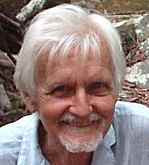Nevertheless it is good to be reminded, and to once again experience the extremes of the weather, for extreme it can be, and usually is, with the snow on the mountains. And on some occasions, when Europe is experiencing a cold winter, still to be found in the cities and towns as well. This year though, so I am told, it has been a mild winter.
The buskers on the streets are a great joy to me, providing great music in what can be a rather dreary background, especially in winter. And yes I am aware that the saxophonist is wearing short sleeves and shorts which gives the impression of warmer weather. You will notice though, that all the other people in the photo are wearing winter gear, and I can assure you it was decidedly cold.
Yours truly with my friend and student Giovanni.
Naturally enough, there will always be a castle.
Originally a Visconti fortress, this iconic red-brick castle was later home to the mighty Sforza dynasty, who ruled Renaissance Milan. The castle's defences were designed by the multitalented da Vinci; Napoleon later drained the moat and removed the drawbridges. Today, it houses seven specialised museums, which gather together intriguing fragments of Milan’s cultural and civic history, including Michelangelo’s final work, the Rondanini Pietà, now housed beautifully in the frescoed hall of the castle's Ospedale Spagnolo (Spanish Hospital).
Adjacent to the castle is the statue of Garibaldi.
Giuseppe Garibaldi, (born July 4, 1807, Nice, French Empire [now in France]—died June 2, 1882, Caprera, Italy), Italian patriot and soldier of the Risorgimento, a republican who, through his conquest of Sicily and Naples with his guerrilla Redshirts, contributed to the achievement of Italian unification under the royal House of Savoy.
This man was indeed a most interesting Sculptor. The flowers and figuirines he was sculpting were sculpted from, of all things, different coloured fruits and vegetables.
And of course there has to be a cathedral.
An exceptionally large and elaborate Gothic cathedral on the main square of Milan, the Duomo di Milano is one of the most famous buildings in Europe. It is the largest Gothic cathedral and the second largest Catholic cathedral in the world.
So you are wondering what I am doing here, just as I did upon first observing others at this spot. Below my right foot is a depression into which you place your foot, rotate yourself in a clockwise direction three times, and make a wish. I have no comments as to whether your wish will be answered or not.
Leonardo di ser Piero da Vinci, more commonly Leonardo da Vinci or simply Leonardo (Italian: [leoˈnardo da (v)ˈvintʃi] (









No comments:
Post a Comment